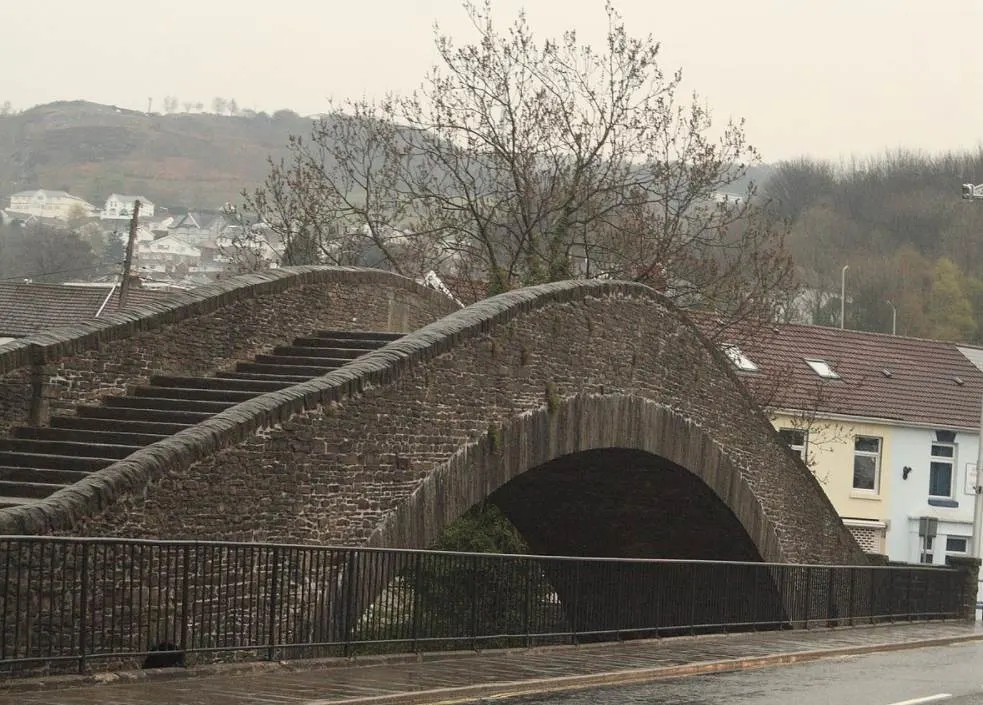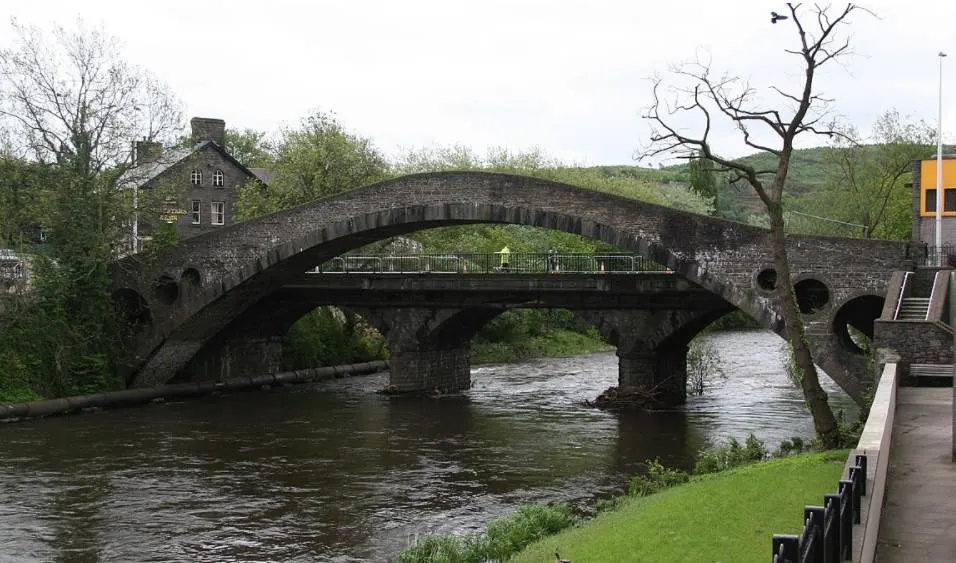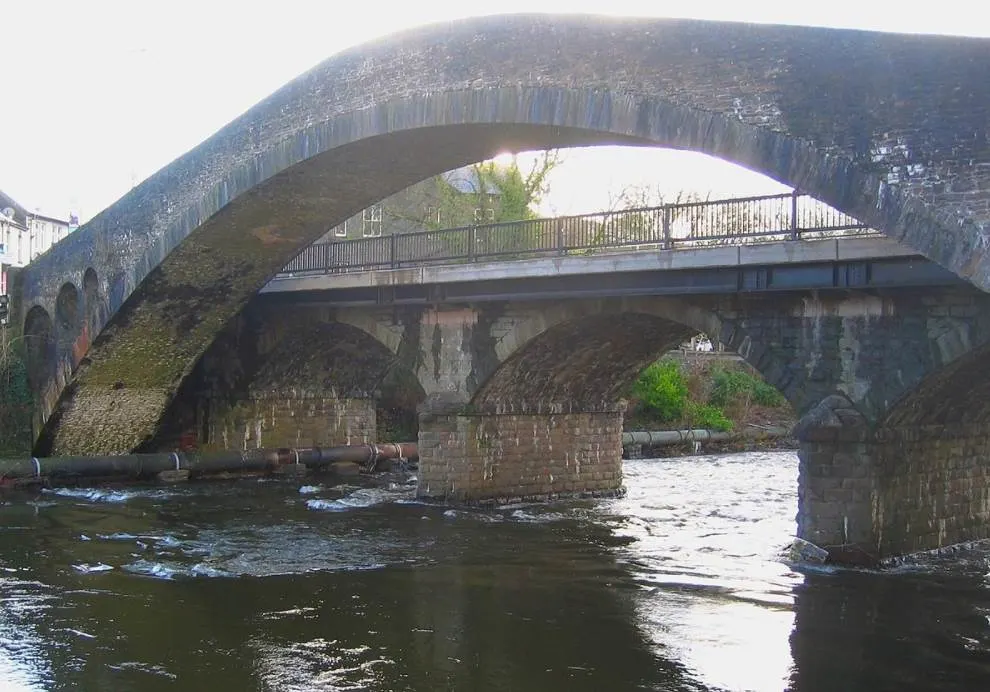Bridge architecture wasn’t always as straightforward as it is today in the 18th century. People didn’t have the modern equipment to both build and design a structure that spans a river, often resulting in accidents.
Regardless of this notion, an amazing bridge completed during this period in history still stands in southern Wales, even though it was quite complicated to finish the project.
In this article, we’ll take a closer look at some of the most interesting facts about the Old Bridge in Pontypridd, one of the most fascinating bridges in the country.
1. It’s located in a small town just northwest of Cardiff
The Old Bridge is also referred to as the William Edwards Bridge or Pontypridd Bridge, a reference to both the designer of the structure and the town it’s located in.
Pontypridd is a town situated in the Rhondda Cynon Taf county in southern Wales and is located at a distance of about 19 kilometers (12 miles) northwest of Cardiff, the capital and biggest city in the country.
The bridge spans the River Taff, a river that emerges in the Brecon Beacons mountain range in South Wales and which flows 67 kilometers (42 miles) before releasing in Cardiff Bay.

2. The bridge can only carry foot traffic across the river
The bridge was constructed halfway through the 18th century and was intended to replace an earlier bridge structure. The original bridge crossed the River Taff in a small village that was then referred to as Pont-y-tŷ-pridd or “The bridge of the earthen house.”
Calling this original structure a bridge is a bit too flattering because it was nothing more than some stepping stones that could only be used when the river ran low.
The original plan was to use the bridge to increase commercial activity in the region but this didn’t exactly go as planned. The bridge was too narrow and more importantly too steep and could only be descended by carriages that used a chain and drag system.

3. It was designed by a self-taught architect and required 4 tries

A Methodist minister who studied bridge architecture and engineering in his spare time was assigned to construct the bridge in Pontypridd in 1746. The unlikely 27-year-old architect didn’t have an easy job because of the strong flow of the River Taff.
His first design was a three-arch stone bridge which was built in 1746 but it washed away following a storm just 2 years later. This disaster was caused by debris being stuck at the bridge’s support pillars causing it to collapse.
The second bridge was built in 1748 was a single-arch design to prevent a similar scenario to happen, but it collapsed before it was even completed. The third bridge was completed but ended up collapsing 6 weeks later due to engineering problems.
It’s hard to imagine after this series of calamities, but the 4th attempt of constructing a single-arch bridge proved to be successful. Even more remarkable is that this bridge, which was completed in the year 1756, is the one that you can still cross in Pontypridd today.

4. It held an amazing record upon completion in the 18th century
Even though the bridge doesn’t look that impressive today, the fact that it was completed in the year 1756 makes this quite a fascinating structure. That’s mainly because it held an amazing record upon completion.
With the main span of the bridge having a length of 43 meters (140 feet), it was the longest single-span bridge in the world upon completion.
Bridge architecture has evolved quite a bit since the 18th century as this record is now held by the Akashi Kaikyō Bridge in Japan which has a span with a length of 1,991 meters (6,532.2 feet), pretty astounding indeed.
5. The Old Bridge was adjoined by a New Bridge in 1857
Perhaps one of the most interesting facts about the Old Bridge is that it was referred to as the “New Bridge” or “Newbridge” until the 19th century. After all, it originally replaced a much older structure in this location.
In that sense, it resembled the Pont Neuf (New Bridge) in Paris which is still called this way even though it’s the oldest bridge in Paris that still stands today.
This all changed in 1857 when the problem of the narrow pedestrian bridge was solved with the construction of the Victoria Bridge right next to it. This bridge has 3 arches and is much better suited to accommodate vehicle traffic.

More interesting facts about the Old Bridge in Pontypridd
6. Although the bridge was intended to improve the commercial activity, it’s only 3 meters (11 feet) wide and extremely steep, especially because it was intended to be crossed by carriages.
The bridge also reaches a height of 10 meters (33 feet) above the River Taff below.
7. One of the most remarkable features of the bridge is the 3 cylindrical holes on each end. These have a diameter of 2.7 meters (8.9 feet), 1.7 meters (5.6 feet), and 1.1 meters (3.6 feet).
These were integrated by William Edwards to reduce the pressure on the crown of the bridge, something that caused the bridge to collapse in the second and third attempts.

8. William Edwards was hired by an administrative division called the Hundreds of Miskin and Caerphilly. He was to be paid £500 for the design and construction of the bridge, a handsome amount of nearly £115,000 today.
Because the first 3 attempts failed, the total construction cost of the bridge was about £1,153, resulting in a loss of well over £653 for the poor man. Luckily, the Lords of Talbot and Windsor helped him out due to his remarkable perseverance and subsequent achievement.
9. The Old Bridge is considered to be a Scheduled Monument in the UK and was listed as a Grade I building on May 25, 1962. It’s currently maintained by the local county government of Rhondda Cynon Taf.
10. Just like many other historic structures in the United Kingdom and Europe, the Old Bridge at Pontypridd became the inspiration for Romantic artists, including the likes of Richard Wilson and J.M.W Turner.
The latter created a painting that can now be admired at the Tate Museum in London and dates back to the year 1798.

